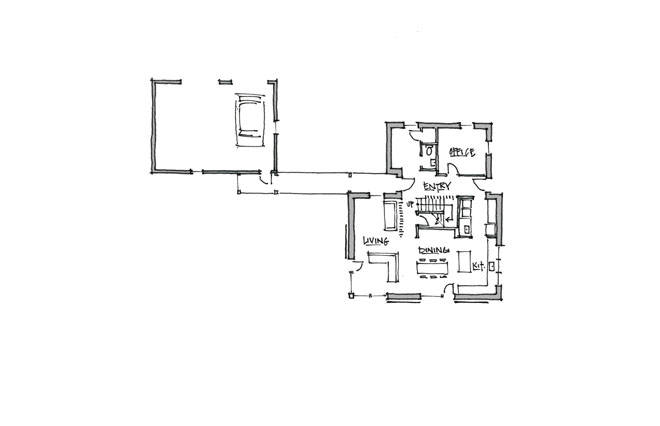Hayfield House
THE DRAWING BOARD – December 2012
Architect: GO Logic
Builder: TBD
Construction start: November 2012
Construction complete: May 2013
A gently sloping three-acre, tree-rimmed hayfield is the proposed site for a 2,100-square-foot three-bedroom residence that is on target to become Passive House certified. The house is being designed to accommodate a family with three young children, with the understanding that the home will need to be flexible and adaptable to keep up with the family’s changing needs over time. Given the rural surroundings, the clients were interested in building a house that would be compatible with the surrounding New England vernacular, but because their personal tastes have been informed by living in cosmopolitan areas, they did not want their home to be completely defined by a country aesthetic. The resulting design is a home with a traditional building form and window openings facing the street, but with larger areas of glass and less traditional detailing facing the field. The interior plan is open, allowing flexible use and great views out the floor-to-ceiling triple-glazed windows to the south and east. The detailing of the interior is also clean and simple, with the exposed wood structure in the living room and the wood cabinetry contrasted by exposed concrete floors and simple painted surfaces.
The goal of reaching the Passive House standard for energy performance was set relatively early in the design process and informed several fundamental design decisions, including the compact massing of the building, southerly orientation, and large areas of glazing. The building shell is also detailed for energy efficiency, with highly insulated walls, ceiling, and foundation, and includes a ventilation system with heat recovery. In concert, the form, orientation, glazing, and building shell will result in a building that uses 90 percent less energy for space heating than standard construction and that is comfortable and healthy to live in, with space-heating demands on the coldest winter nights satisfied by a heat output equivalent to that of a hair dryer.



